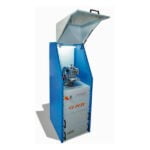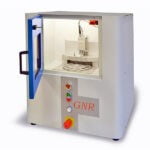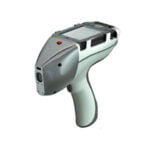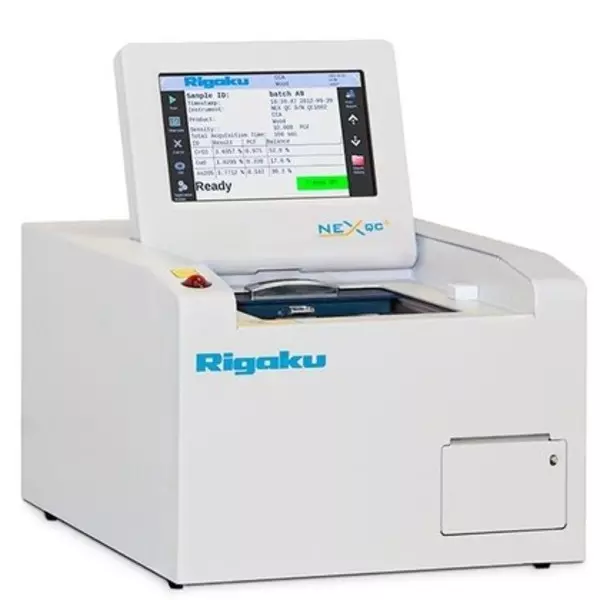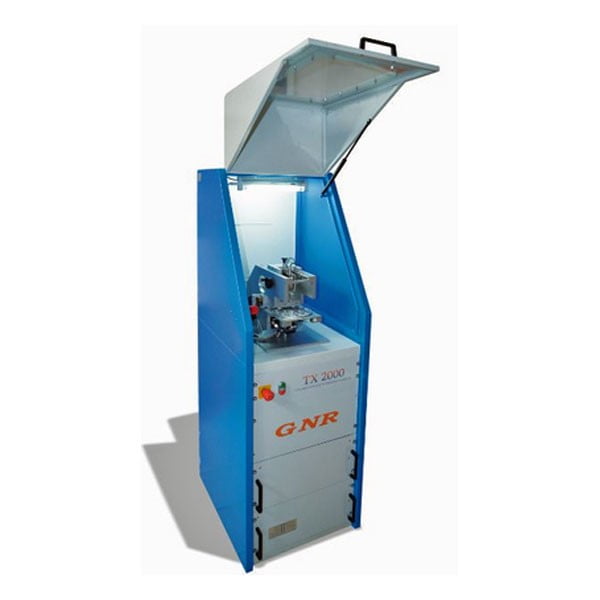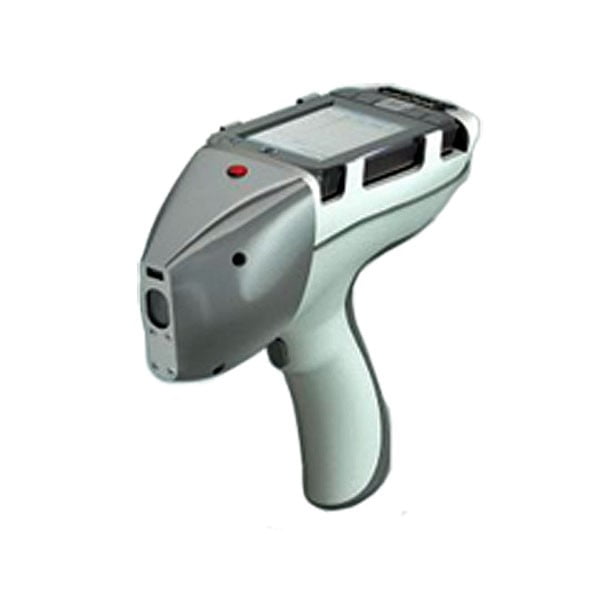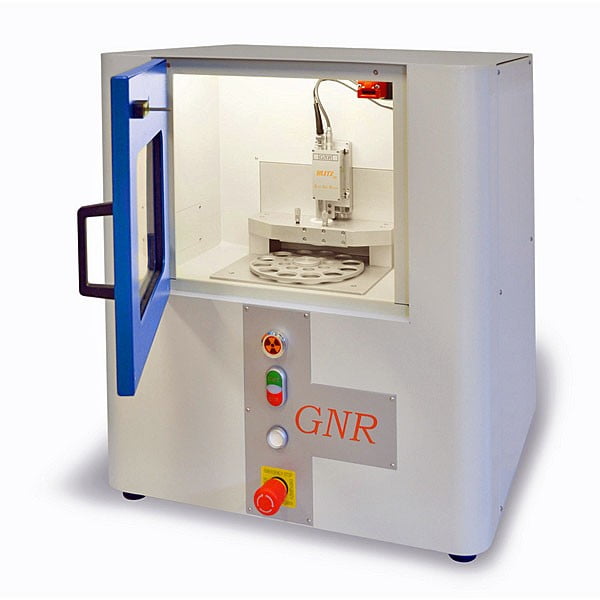X-Ray Fluorescence ( XRF)
X-Ray Fluorescence (XRF) spectrometry is a non-destructive analytical technique based on the characteristic emission of X-Ray photons by atoms when returning to the ground state after an excitation. This property is used to obtain elemental information from different types of materials in several fields.
The basic Energy-Dispersive XRF analyzer (ED-XRF) set-up consists of an X-Ray tube as the excitation source, a sample housing and a semi-conductor detector which allows to discriminate between different energy photons. The angles between the incident X-Ray beam, the sample and detector are equal to 45 degrees to minimize the scattered background.
TXRF is founded on the same principles of the EDXRF however there is one significant difference. In contrast to EDXRF where the primary beam strikes the sample at an angle of 45°, TXRF uses a glancing angle of a few milliradians with the detector positioned just above the sample at 90 degrees.
Primary beam is totally reflected by a flat substrate (carrier) because of low incidence angle to which the sample in dried liquid/slurry form to leave only a thin residue film ideally few nanometres thick. The total reflection condition provides an enhanced fluorescence excitation, while the reduced thickness allows to get rid of any matrix effect: thus, the signal to background ratio is enhanced and for each element a simple linear relationship between its characteristics fluorescence peak intensity and concentration exists.
Quantitative analysis can be performed by adding an internal standard to the sample solution/suspension, i.e. an element which is not present in the original sample (usually Ga, Sc, Co or Y). Then a small droplet, about 5-100 ml is taken from the solution/suspension with the internal standard and deposited onto the carrier.
The technique is generally non-destructive and it is suitable for solids, liquids, powders and alloys. Depending on the sample, analysis can be carried out on the “as is” specimen or after a treatment step, e.g. dilution, digestion, ashing, on-site enrichment etc. In many cases the correct sample preparation is instrumental in getting low LOD and accurate qualification.
Advantages of the TXRF
- No matrix effects
- A single internal standard greatly simplifies quantitative analyses
- Calibration and quantification independent from any sample matrix
- Simultaneous multi-element ultra-trace analysis
- Several different sample types and applications
- Minimal quantity of sample required for the measurement (5 ml)
- Unique microanalytical applications for liquid and solid samples
- Excellent detection limits (ppt or pg) for all elements from sodium to plutonium
- Excellent dynamic ranges from ppt to percent
- Possibility to analyse the sample directly without chemical pre-treatment
- No memory effects
- Non-destructive analysis
- Low running cost
XRF Portfolio
NEX QC+ Rigaku Benchtop EDXRF analyzer
NEX QC+ is non-destructive affordable Benchtop EDXRF analyzer for Elemental Analyzers from Sodium through Uranium in a wide variety of matrix.
compact, cost-effective solutions for elemental analysis needs.
Confirms : ISO 13032, ASTM D4294, ASTM D6481, ASTM D5059, ASTM D8252, JIS K 2541, IP 336, IP 496, ISO 8754, ISO 20847
High Precision and Broad Elemental Coverage
Unmatched performance-to-price ratio
Solids, liquids, alloys, powders, and thin films
Minimized X-ray tube wear and tear by operating only during data collection
TX 2000 State of the art TXRF Spectrometer
TX 2000 is a high precision TXRF Spectrometer ( Total reflection X-Ray Fluorescence) with Improved detection limits (LOD) down to ng/g or lower without any matrix effect
Simultaneous multi-element analysis from Na to Pu
Confirms to ISO/TS 18507:2015, ISO 20289:2018
No matrix effect
No matrix-dependent calibration curves
Microanalysis capabilities
Improved detection limits (LOD) down to ng/g or lower
ProSpector Handheld XRF Analyzer
ProSpector is non-destructive handheld ED XRF elemental analysis solution for quantification on the field of nearly any element (from Magnesium to Uranium).
High speed of operation @ above 500 000 CPS count rate
Ambient temperature and pressure corrections for highest stability
Over 10 hours operation from the battery
Detector protection
Extensive and editable alloy grade library
Radiation safety: IR proximity sensor and low count detection
Horizon benchtop TXRF Analyzer
Horizon is Ultra Trace Benchtop EDXRF Spectrometer (TXRF) for multi elemental qualitative and quantitative analyses for major constituents and ultra-trace in suspension as well as liquid samples.
Simultaneous multi-element analysis from Na to Pu
Confirms to ISO/TS 18507:2015, ISO 20289:2018
No matrix effect
No matrix-dependent calibration curves
Microanalysis capabilities
Improved detection limits (LOD) down to ng/g or lower


